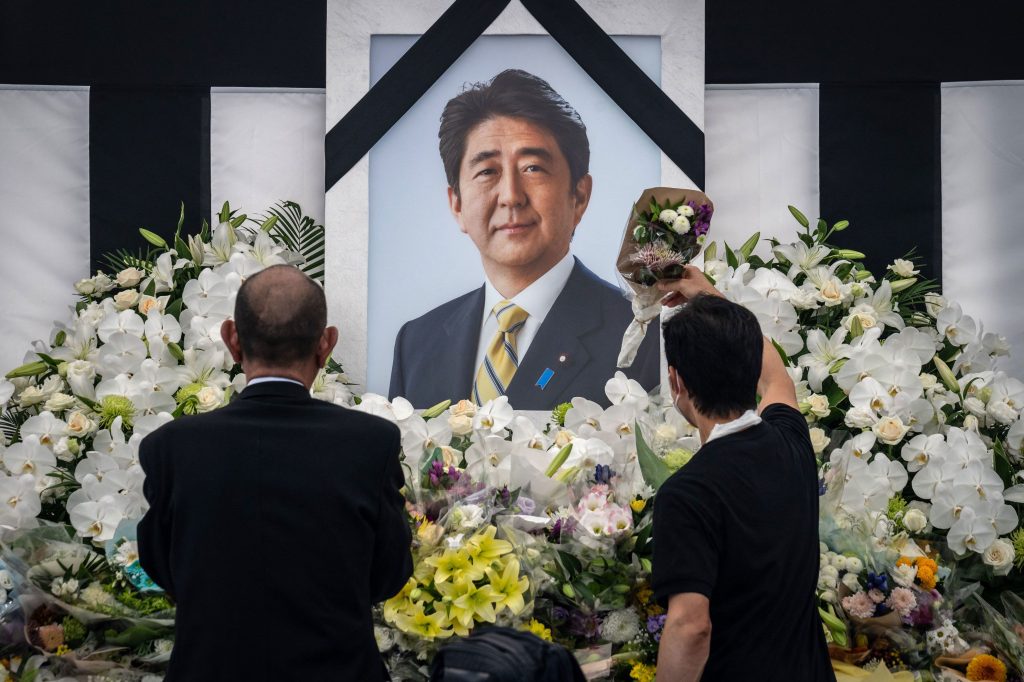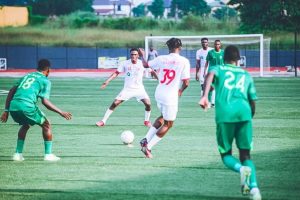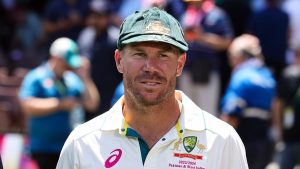Japan holds controversial state funeral for assassinated leader Shinzo Abe | CNN

Tokyo
CNN
—
Japan bid farewell to former Prime Minister Shinzo Abe in an elaborate state funeral Tuesday, despite public opposition to the cost of the event as the country grapples with their late leader’s legacy.
Abe, Japan’s longest-serving prime minister, was shot dead during a campaign speech in Nara in July, stunning a nation where gun violence is extremely rare.
More than 4,300 guests are expected to attend the service at the Nippon Budokan Arena in Tokyo, including foreign dignitaries such as US Vice President Kamala Harris and Indian Prime Minister Narendra Modi.
Abe’s ashes were carried into the venue, where the government played a video tribute honoring his life and career. Prime Minister Fumio Kishida then delivered a memorial address, praising Abe’s “courage” and dedication.
Other government figures including former Prime Minister Yoshihide Suga – who was Abe’s right hand man for many years – also gave remarks, before attendees laid flower offerings and bowed in turn.
Other ceremonial rites on the program include an honor guard, gun salute, and musical performances, before a government reception for visiting foreign dignitaries.
Police have ramped up security, with public broadcaster NHK reporting that about 20,000 police officers will be deployed to keep the peace. But altercations broke out anyway between police and demonstrators outside the funeral venue.
Photos: Former Japanese Prime Minister Shinzo Abe
Stefan Boness/Visum/Redux
Then-Japanese Prime Minister Shinzo Abe addresses the media during a news conference in 2014.
Photos: Former Japanese Prime Minister Shinzo Abe
Abe and his wife, Akie, marry at their wedding in Tokyo in 1987. They were accompanied by former Japanese Prime Minister Takeo Fukuda and his wife, Mie.
Photos: Former Japanese Prime Minister Shinzo Abe
The Asahi Shimbun/Getty Images
Abe breaks the lid of a sake barrel to celebrate winning a seat in the Japanese House of Representatives in 1993. Abe’s father, Shintaro, once held the same position.
Photos: Former Japanese Prime Minister Shinzo Abe
The Asahi Shimbun/Getty Images
Abe receives the National Diet member’s pin at his first legislature session in 1993.
Photos: Former Japanese Prime Minister Shinzo Abe
The Asahi Shimbun/Getty Images
Abe addresses his father’s memorial ceremony in Tokyo in 1993.
Photos: Former Japanese Prime Minister Shinzo Abe
Kyodo News Stills/Getty Images
Abe, as deputy chief cabinet secretary, plays golf with Prime Minister Yoshiro Mori, left, and Chief Cabinet Secretary Hidenao Nakagawa, center, in 2000.
Photos: Former Japanese Prime Minister Shinzo Abe
Shizuo Kambayashi/AP
Abe, far left, stands with Japanese Prime Minister Junichiro Koizumi, center, and other members of the general council of the Liberal Democratic Party in 2003. Koizumi had just won re-election as president of the ruling party and had filled several key party positions.
Photos: Former Japanese Prime Minister Shinzo Abe
Tim Sloan/AFP/Getty Images
Abe, as secretary general of the ruling Liberal Democratic Party, addresses reporters outside the White House after meeting with then-US National Security Advisor Condoleezza Rice in 2004.
Photos: Former Japanese Prime Minister Shinzo Abe
Itsuo Inouye/AFP/Getty Images
Abe speaks to reporters after having lunch with Thomas Schieffer, the US Ambassador to Japan, in 2005. Abe at the time was Japan’s chief cabinet secretary.
Photos: Former Japanese Prime Minister Shinzo Abe
The Asahi Shimbun/Getty Images
Abe and Koizumi wear 3D glasses during a science and technology conference held at Koizumi’s official residence in 2006.
Photos: Former Japanese Prime Minister Shinzo Abe
Katsumi Kasahara/AFP/Getty Images
In 2006, Abe meets with Sakie Yokota and her husband, Shigeru, whose daughter Megumi was kidnapped in 1977 by North Korean agents. Megumi’s parents were telling Abe about Sakie’s meeting with US President George W. Bush.
Photos: Former Japanese Prime Minister Shinzo Abe
Tatsuyuki Tayama/Gamma-Rapho/Getty Images
Abe bows to applause from lawmakers of the ruling Liberal Democratic Party after winning the party’s presidential election in 2006. He would become Japan’s prime minister, succeeding Koizumi.
Photos: Former Japanese Prime Minister Shinzo Abe
Pool Interagences/Gamma-Rapho/Getty Images
Abe settles into his party’s presidential seat in 2006 after succeeding Koizumi as Japan’s prime minister.
Photos: Former Japanese Prime Minister Shinzo Abe
Yoshikazu Tsuno/AFP/Getty Images
Abe meets US Secretary of State Condoleezza Rice at his office in Tokyo in 2006.
Photos: Former Japanese Prime Minister Shinzo Abe
2007 Christian Irrgang / Agentur Focus/Redux
Abe meets with other world leaders at a G8 summit in Germany in 2007.
Photos: Former Japanese Prime Minister Shinzo Abe
Yoshikazu Tsuno/AFP/Getty Images
Television screens show Abe as he announces his resignation as prime minister in 2007. He’d been in power for less than a year, but a string of scandals hampered his agenda and sent his approval ratings plummeting.
Photos: Former Japanese Prime Minister Shinzo Abe
The Asahi Shimbun/Getty Images
Abe started a second term as prime minister in 2012. Here, he poses for photos with new cabinet members at his official residence in Tokyo.
Photos: Former Japanese Prime Minister Shinzo Abe
The Asahi Shimbun/Getty Images
Abe’s visit to Tokyo’s Yasukuni Shrine in 2013 inflamed tensions with China and South Korea. Visits to the shrine by Japanese leaders are controversial because the facility enshrines Class-A war criminals as well as the war dead.
Photos: Former Japanese Prime Minister Shinzo Abe
Kyodo News/AP
Abe, center, and former Prime Minister Yoshiro Mori, right, with other delegates, celebrate after Tokyo was awarded the 2020 Summer Olympic Games, in Buenos Aires, Argentina in 2013.
Photos: Former Japanese Prime Minister Shinzo Abe
Abe stands up after being re-elected in 2014.
Photos: Former Japanese Prime Minister Shinzo Abe
Toshifumi Kitamura/AFP/Getty Images
Abe and his wife, Akie, attend a tea ceremony presentation at the World Assembly for Women conference in Tokyo in 2015.
Photos: Former Japanese Prime Minister Shinzo Abe
Ma Ping/Xinhua/eyevine/Redux
Abe listens to opposition lawmakers statements in Tokyo in 2015. Japan’s ruling coalition rammed through a series of controversial security bills, marking the most significant overturn of the nation’s “purely defensive” defense posture.
Photos: Former Japanese Prime Minister Shinzo Abe
/Yin Bogu/Xinhua News Agency/eyevine/Redux
Abe addresses a joint session of the US Congress in 2015.
Photos: Former Japanese Prime Minister Shinzo Abe
John Stillwell/PA Wire/Redux
Abe and his wife, Akie, visit Britain’s Queen Elizabeth II at Buckingham Palace in 2016.
Photos: Former Japanese Prime Minister Shinzo Abe
Kyodo News/Getty Images
After giving speeches at Pearl Harbor in Hawaii in 2016, Abe and US President Barack Obama talk with veterans who survived the Japanese attack there in 1941. In the speech, Abe offered his “sincere and everlasting condolences” for those who died in the attack.
Photos: Former Japanese Prime Minister Shinzo Abe
Marcelo Correia/Camera Press/Redux
Abe takes part in the closing ceremony of the 2016 Olympic Games in Rio de Janeiro. Tokyo would be hosting the next Summer Olympics.
Photos: Former Japanese Prime Minister Shinzo Abe
Toru Hanai/Reuters
Abe stands in front of the Japanese flag after the Liberal Democratic Party’s annual convention in 2017.
Photos: Former Japanese Prime Minister Shinzo Abe
Doug Mills/The New York Times/Redux
Abe and US President Donald Trump feed koi during Trump’s visit to the Akasaka Palace in Tokyo in 2017.
Photos: Former Japanese Prime Minister Shinzo Abe
Doug Mills/The New York Times/Redux
US Vice President Mike Pence is flanked by his wife, Karen, and Abe during the opening ceremony of the 2018 Winter Olympics in Pyeongchang, South Korea. Kim Yo-jong, sister of North Korean leader Kim Jong-un, is standing at left in the back row.
Photos: Former Japanese Prime Minister Shinzo Abe
Abe drives Trump in a golf cart as they play a round in Japan’s Chiba Prefecture in 2019.
Photos: Former Japanese Prime Minister Shinzo Abe
Dave Sanders/The New York Times/Redux
Abe delivers remarks at the UN General Assembly in New York in 2018.
Photos: Former Japanese Prime Minister Shinzo Abe
Li Xueren/Xinhua/Getty Images
Abe meets with Chinese President Xi Jinping at the Great Hall of the People in Beijing in 2019.
Photos: Former Japanese Prime Minister Shinzo Abe
Kyodo News/Kyodo News Stills/Kyodo News Stills via Getty Imag
Abe sits next to Russian President Vladimir Putin at a ceremony for a cultural exchange project in Osaka, Japan, in 2019.
Photos: Former Japanese Prime Minister Shinzo Abe
ROTA/Camera Press/Redux
Abe receives a guard of honor while visiting the United Kingdom in 2019.
Photos: Former Japanese Prime Minister Shinzo Abe
Abe and his wife, Akie, greet Japanese Emperor Akihito and Empress Michiko on their 60th wedding anniversary in 2019.
Photos: Former Japanese Prime Minister Shinzo Abe
Tomohiro Ohsumi/Getty Images
People in Osaka, Japan, walk past a monitor showing a live broadcast of Abe talking about the Covid-19 pandemic in 2020.
Photos: Former Japanese Prime Minister Shinzo Abe
Franck Robichon/Xinhua/Pool/Redux
Abe leaves after a news conference in Tokyo in 2020. He said he would step down from his post due to health concerns.
Photos: Former Japanese Prime Minister Shinzo Abe
Jinhee Lee/NurPhoto/Getty Images
Abe waves from a car window as he leaves a campaign event for the Liberal Democratic Party in Ise, Japan, in 2021. He continued to campaign for his party’s candidates until his assassination in July 2022.
Photos: Former Japanese Prime Minister Shinzo Abe
The Asahi Shimbun via Getty Images
Abe makes a street speech for party candidates in Nara, Japan, before he was shot on Friday, July 8.
Photos: Former Japanese Prime Minister Shinzo Abe
Kyodo News/AP
Abe is seen on the ground after being shot in Nara.
Divisions over legacy
On Tuesday morning, crowds of people lined up outside designated memorial sites to leave flowers and pay their final respects to Abe, who dominated Japanese politics for a generation.
But as they mourned, thousands of others took to the streets in anti-funeral protests across Tokyo, illustrating a deep public divide over the occasion, Japan’s first state funeral for a Japanese leader since 1967.
Some crowds chanted slogans as they marched near the funeral venue, waving banners that urged a stop to the proceedings. Protest leaders rallied the crowd through loudspeakers, and a van rolled past with music blasting from a boom box.
The protests grew tense at times, with several loud confrontations and scuffles between demonstrators and police.
Since Abe’s assassination, the country has faced rising inflation and revelations that half of Japan’s ruling party members had ties with the controversial Unification Church, which has faced backlash over fundraising practices – prompting the church to pledge reforms to ensure that donations are “not excessive.”
Some critics have pointed to Abe’s unpopular policies as a reason for discontent, and questioned why so much taxpayer money is going to the state funeral – which will cost some $12 million (1.66 billion yen) – at a time of acute economic strain.
“It was a tragedy that Abe was gunned down and lost his life, but we shouldn’t make him a hero out of this tragedy,” one protester, Shinsaku Nohira, told CNN at a recent anti-state funeral demonstration outside Japan’s parliament.
“At least half of Japan’s population is against this state funeral, so I don’t want the government’s messaging to get out there, I want people out there to know that there are citizens in Japan who are opposing this event.”
An opinion poll by NHK earlier in September showed that 57% of respondents oppose the state funeral, compared to 32% who support it – and the rest said they didn’t know, or declined to answer.
Prime Minister Fumio Kishida has tried to appease the public, saying a state funeral for Abe was “fitting” given his achievements as former leader. The ceremony is not meant to “force people to mourn” or to become a “political issue,” he said in August.
Abe’s tenure and assassination
Abe held office for two separate terms, during which he transformed Japan’s security posture, raising questions over the country’s status as a pacifist nation, and passed a major security legislation in 2015 that expanded what Japan could do militarily to support the US.
He also was a prominent figure on the world stage, cultivating strong ties with Washington and seeking better relations with Beijing – while also trying to counter Chinese expansion in the region by uniting Pacific allies.
One of his final successes in office was securing the 2020 Tokyo Olympics – though the Covid-19 pandemic forced the competition to be postponed to 2021.
After stepping down in 2020, citing health reasons, Abe remained active in politics, often campaigning for his party – which is what he was doing at the time of his assassination.
NHK reported in July that the suspected shooter, Tetsuya Yamagami, had targeted the former Prime Minister because he believed Abe’s grandfather – another former Japanese leader – had helped the expansion of a religious group he held a grudge against.
CNN has not been able to independently confirm what group Yamagami was referring to, or links between Abe and any group the suspect harbored hatred towards.
04:14
– Source:
CNNI
Controversial church under the microscope after assassination
But the assassination saw a backlash against the Unification Church, which said Yamagami’s mother had been a member who attended church events, though Yamagami himself was never a member.
It also said that the church had received a message of support from Abe at an event it organized, but that the former prime minister was not a registered church member, nor did he sit on its advisory board.
Abe’s death sent shock waves through Japan and the international community, with thousands of mourners gathering in Tokyo in July as his private funeral took place.







